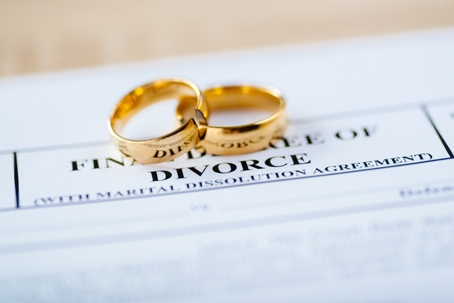A question that family law practitioners are occasionally poised with is “what happens to the engagement ring?” when an engagement has ended. Engagement rings can be extremely expensive or sentimental to the giver and it makes sense for the person “gifting” the ring to want it back.
For the past six decades, the Court relied on the decision in DeCicco v. Barker, 339 Mass. 457, 458 (1959), which applied an “at fault” test. This fault-based approach would allow the purchaser of the ring to regain possession as long as they were not considered at fault for ending the engagement.
However, the latest case to hit the Supreme Judicial Court in Massachusetts has overturned that ruling. A Massachusetts couple, Bruce Johnson and Caroline Settino got engaged in 2017. Bruce purchased a $70,000 tiffany engagement ring for Caroline, and she said yes. Unfortunately, over the next year or so the relationship began to deteriorate. According to the facts presented to the trial court, Caroline began to treat Bruce poorly. Further, Bruce found compromising text messages on her phone to and from another man. Bruce suspected she was having an affair, but Caroline denied it, claiming the man was a lifelong friend. Bruce ended the engagement due to his suspicions and Caroline kept the ring, resulting in this action.
The trial court held onto the DeCicco case and used a fault-based approach. However, this decision highlighted holes in the standing approach. While a layperson would likely side with Bruce based on the fact that he ended the engagement due to suspicions of cheating, that is not the way the lower court ruled. Instead, they decided that he was wrong about the affair and his beliefs were mistaken and therefore the engagement had ended for “no reason” and he must be considered at fault.
Bruce then brought the case to the appeals court where they reversed based on the reason that there is no current legal standard to necessarily determine fault and that the party who ends the engagement is not necessarily to blame. They grappled with the fact that while Bruce may not have been correct about any alleged affair, his beliefs were reasonable. This case also discussed the complications in assigning fault and the lack of a “justification” test. For example, what is considered “fault”? Could it be that one party doesn’t maintain a tidy home? The parties like different television shows? Or is the standard something more serious in that one party cheated or there was an incident of domestic violence?
The Supreme Judicial Court threw it all out the window and ultimately joined the modern trend that treat engagement rings as conditional gifts that must be returned to the person who purchased it regardless of fault, making Massachusetts now a “no-fault” jurisdiction in relation to engagement rings. With the Court stating, “We now join the modern trend adopted by the majority of jurisdictions that have considered the issue and retire the concept of fault in this context,” the justices wrote in Friday’s ruling. “Where, as here, the planned wedding does not ensue and the engagement is ended, the engagement ring must be returned to the donor regardless of fault.” Liz Coyne

